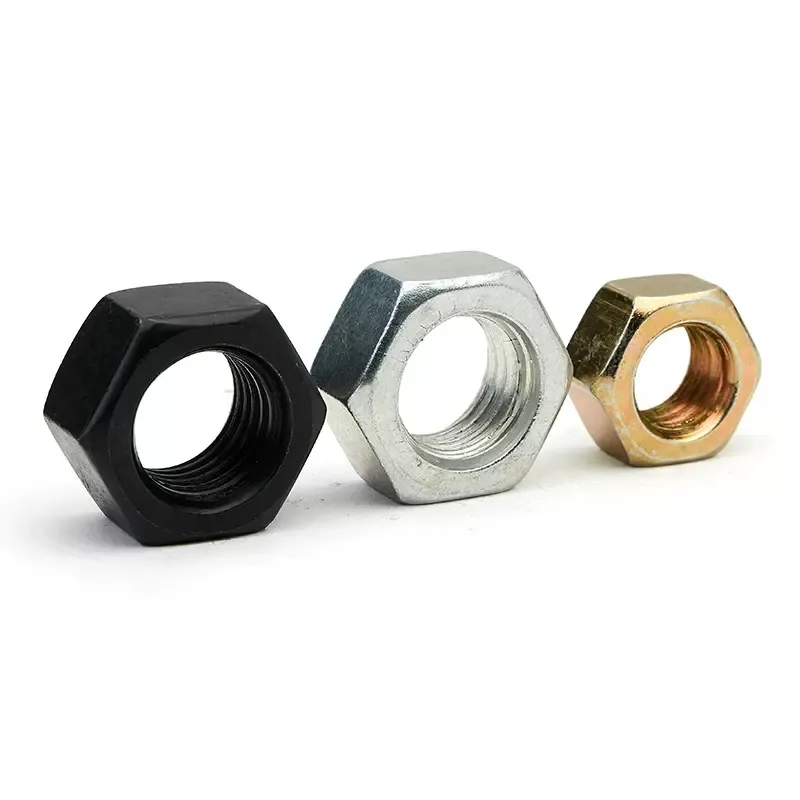

High-Quality M16 x 1.0 Nut for Precision Engineering and Reliable Performance in Various Applications
Aug . 13, 2024 21:59 Back to list
High-Quality M16 x 1.0 Nut for Precision Engineering and Reliable Performance in Various Applications
Understanding the M16 x 1.0 Nut Specifications, Applications, and Importance
When delving into the world of fasteners, one often encounters a wide array of terms and specifications. Among these, the M16 x 1.0 nut stands out as a critical component in various mechanical applications. This article will explore what the M16 x 1.0 nut is, its specifications, applications, and its importance in engineering and manufacturing sectors.
What is the M16 x 1
.0 Nut?The designation M16 x 1.0 refers to a metric nut that is specifically designed to fit an M16 bolt, which has a nominal diameter of 16 millimeters. The “1.0” signifies the thread pitch, meaning there is a 1-millimeter distance between adjacent threads. The M16 x 1.0 nut adheres to the International Organization for Standardization (ISO) standards, ensuring uniformity and consistency in size and threading.
These nuts are typically made from various materials such as stainless steel, carbon steel, and alloys, often treated for added durability and resistance to environmental factors. The choice of material can significantly influence the nut's performance, particularly in high-stress environments where strength and resistance to corrosion and wear are critical.
Specifications
1. Dimensions The M16 x 1.0 nut features an inner diameter of approximately 16 mm, with standard hexagonal outer dimensions that allow for easy gripping and turning with hand tools or wrenches. 2. Grade The strength of M16 nuts can vary significantly with the grade, which represents the yield strength and tensile strength of the material. Common grades include 8, 10, and 12, with grade 8 being robust and widely used in structural applications.
3. Coating Many M16 nuts come with different surface treatments—be it zinc plating for corrosion resistance or black oxide finishes for reduced friction. These coatings can significantly extend service life, especially in harsh environmental conditions.
Applications
m16 x 1.0 nut

M16 x 1.0 nuts are ubiquitous in numerous industries and applications. Their robust design makes them ideal for
- Automotive Industry These nuts are commonly used in vehicle assembly, particularly in wheel fittings, engine mounts, and structural components. - Construction M16 nuts are integral to various construction applications, including bolting framework, trusses, and scaffolding systems, ensuring structural integrity and safety.
- Manufacturing Equipment In machinery and industrial equipment, M16 nuts secure machine parts and components, facilitating smooth operations in factories and assembly lines.
- Aerospace Due to their reliability and strength, M16 x 1.0 nuts are also used in aerospace applications, which require components to withstand high levels of stress and varying environmental conditions.
Importance
The significance of the M16 x 1.0 nut cannot be overstated. In engineering, the correct selection of fasteners is crucial for the safety and durability of structures and systems. Using the appropriate nut helps prevent failures that could lead to accidents or costly repairs.
Moreover, standardization in fasteners like the M16 x 1.0 allows for interoperability and easy sourcing, enabling manufacturers and repair facilities to maintain uniformity in their operations. This standardization also simplifies the training of personnel, as the same tools and techniques can be applied across multiple projects involving similar specifications.
Conclusion
In conclusion, the M16 x 1.0 nut is a vital component in a multitude of applications across various industries. Understanding its specifications, applications, and importance allows engineers, designers, and manufacturers to make informed decisions, ensuring safety and efficiency in their projects. As technology advances and new materials are introduced, the role of these ubiquitous fasteners will remain paramount in modern engineering and manufacturing.
Latest news
-
High-Strength Hot-Dip Galvanized Bolts-Hebei Longze|Corrosion Resistance&High Strength
NewsJul.30,2025
-
Hot Dip Galvanized Bolts-Hebei Longze|Corrosion Resistance&High Strength
NewsJul.30,2025
-
Hot Dip Galvanized Bolts - Hebei Longze | Corrosion Resistance, High Strength
NewsJul.30,2025
-
High-Strength Hot Dip Galvanized Bolts-Hebei Longze|Corrosion Resistance, Grade 8.8
NewsJul.30,2025
-
Hot Dip Galvanized Bolts-Hebei Longze|Corrosion Resistance,High Strength
NewsJul.29,2025
-
High-Strength Hot Dip Galvanized Bolts - Hebei Longze Metal Products Manufacturing Co., Ltd.|corrosion resistance&high strength
NewsJul.29,2025

